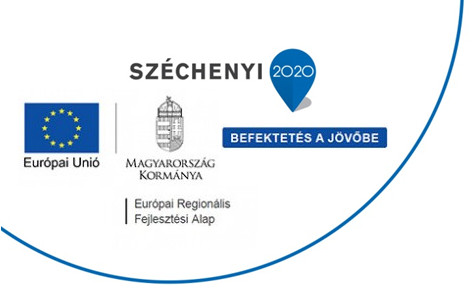V.fejezet
V. Fejezet:
Iparosok, kereskedők, mesterek
Németországban már a kora középkortól kezdve az első fiú örökölte a földet, a paraszti gazdaság nem volt osztható, a többi fiúgyereknek szakmát kellett tanulnia. Így aztán érthető, hogy a Magyarországra települt sváb, szász, német családok kiváló mesterembereket adtak az országnak.
Újhartyánban is voltak iparosok, kereskedők: ami kell az kell. A képek tanúsága szerint volt itt varrónő ( több is ), kőműves, szíjgyártó, asztalos, korcsmáros ( no abból sem szenvedtek hiányt: az asszonyok varrónőhöz, a férfiemberek kocsmába mentek inkább), trafikos, műszerész, cipész, fodrász – legalábbis a szerkesztő ennyit tudott összeszámolni. Nem számolta, mert nem számolhatta össze például a kovácsokat, akikből több is volt: patkolni kellett a lovat, a szekereken mindig akadt javítanivaló, újra abroncsolni a kereket, kaszát, kapát, ásót készíteni: szóval nem maradtak munka nélkül ők sem. De a képek sajnos nem tanúskodnak róluk, mint ahogy nem találunk, hiába keresünk könyvünkben képet pingáló, vagy stikkelő ( hímző, horgoló) asszonyokról.
Hogy komoly létszámú mesterember élt meg mesterségbeli tudásából – ma úgy mondanák : szolgáltatásából -, azt mutatja, hogy - hasonlóan a gazdákhoz -, saját kocsmájuk volt: a Szép utcai Schenk kocsma (míg a gazdák vasárnap délutáni törzshelye a Fő utcai Lenka kocsma volt).
V. Kaptel:
Handwerker, Kaufleute, Meister
In Deutschland erbte der erste Sohn schon seit dem frühen Mittelalter den Grundbesitz, das bauerliche Landgut war nicht zu teilen, die anderen Söhne sollten einen Beruf erlernen. So kann man schon verstehen, dass die nach Ungarn angesiedelten schwäbischen und säschsischen Bauern dem Land ausgezeichnete Fachleute gegeben haben.
In Neuhartin gab es auch Handwerker, Kaufleute: was man braucht, das braucht man. Nach den Bildern zu sehen, es gab hier Schneiderin (sogar mehrere), Maurer, Sattlermeister, Tischler, Gastwirt (es mangelte nicht an ihnen: die Frauen gingen lieber zur Schneiderin, die Männer lieber in die Schenke), Trafikant, Mechaniker, Schuhmacher, Friseur – so viele konnte der Redakteur mindestens zusammenzählen. Er hat aber nicht – er konnte auch nicht – die Zahl der Schmiede bestimmen, obwohl es auch mehrere im Dorf gegeben hat, die Pferde sollten beschlagt werden, es gab auch auf den Fuhrwerken immer etwas zu reparieren, die Räder sollten immer neu bereift werden, Spaten, Hacke, Sense hatten die Leute immer nötig, also die Schmiede blieben auch nicht ohne Arbeit. Leider sind sie auf Bilder nicht zu sehen, wie wir auch keine Bilder über Frauen gefunden haben, die Bilder sticken oder häkeln.
Dass es ein bedeutender Anzahl der Einwohner aus seinem beruflichen Wissen und Können – heute sagen wir: aus Dienstleistungen – gelebt hat, zeigt uns auch, dass sie – den Landwirten ähnlich – eigene Schenke hatten: die Schenk-Schenke in der Szép Straße (die Stammschenke der Landwirte war sonntags die Lenka-Schenke in der Hauptsraße)
Chapter V
Tradesmen, merchants, craftsmen
In Germany, since the beginning of the middle ages, it was the first born son, who inherited the lands of the family. The peasant farms were not to be divided, so the other boys had to learn professions. It is understandable that way that Suabian, Saxon and German families, which settled down in Hungary, gave excellent craftsmen to the country.
There were tradesmen and merchants living in Újhartyán as well: what is needed is needed. According to the photos, there were dressmakers (more than one), bricklayers, harness-makers, carpenters, bartenders (there was no shortfall of that, while ladies spent their time at the dressmakers, men went to the pubs), tobacconists, mechanics, shoemakers, and hairdressers living here – at least the editor of this book could count the above professions. The editor did not count, because he could not count the smiths, though there was more than one of them: horses must have been shod, there was always something to repair on the carts, and they had to re-rim the wheels, to make scythe, hoe and spade, so they had also a lot to do. Unfortunately, there are no photos of them, and we could not find photos of women painting pictures or embroidering either.
There were many craftsman, who earned their living here due to the possession of their professional knowledge – we would say service today – and it is also proved by the fact, that they had their own pub (farmers had their pub as well) in the "Szép” street (Beautiful street), the so called Schenk Pub. (On Sunday afternoons, farmers went to the Lenka Pub in the "Fő” street (Main street)).
 Újhartyán
Újhartyán

